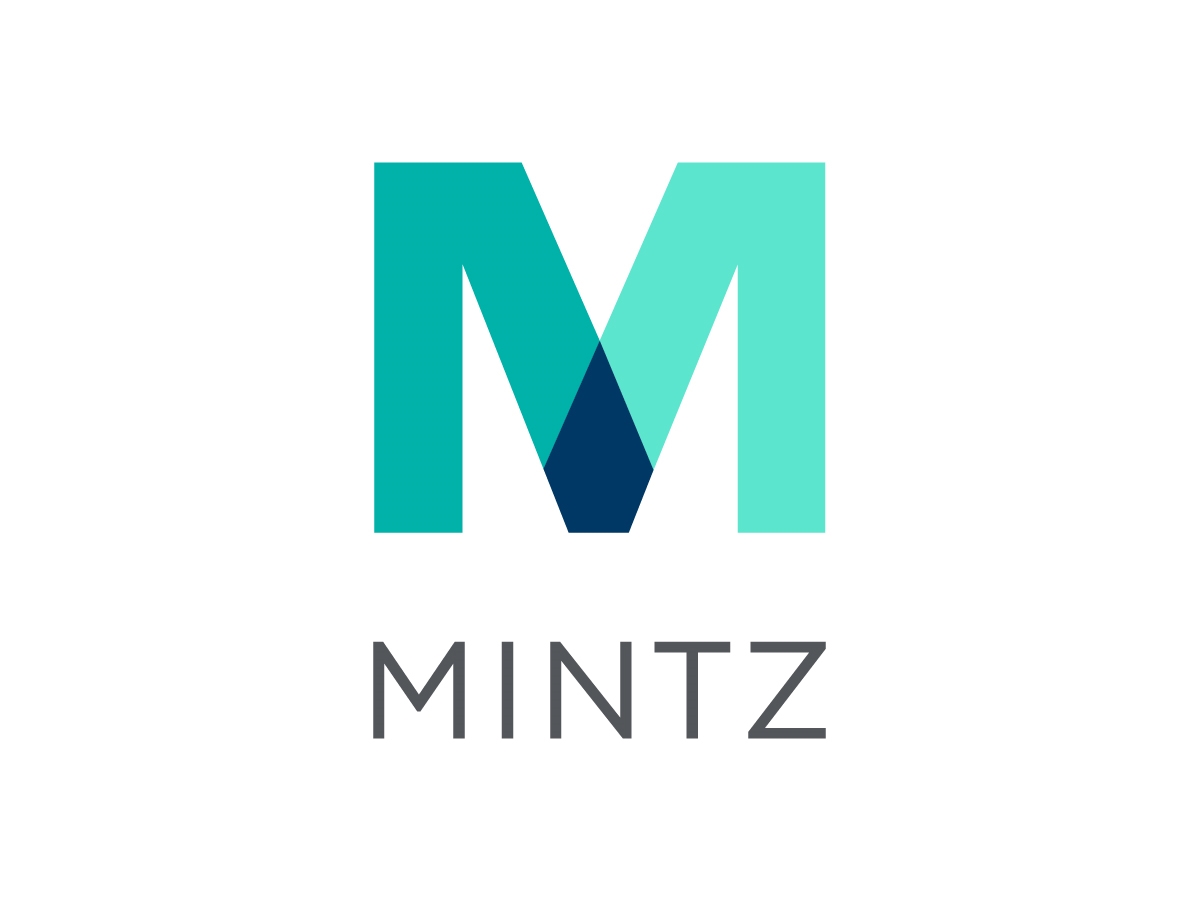The Sky is Not Falling for Skinny Labeling After GSK v. Teva
“In enacting Hatch-Waxman, Congress did not provide generic companies seeking to use skinny labeling with preferential treatment compared to companies in other industries for purposes of inducement. Nor should it do so now.”
Although Professors Sean Tu and Aaron Kesselheim have advocated for legislation to respond to the Federal Circuit’s 2021 opinion in GSK v. Teva, that case did not—as they assert—“threaten[] to nullify every skinny label carveout.” Rather, the Federal Circuit applied the unremarkable principle that generic drug manufacturers are obligated to ensure that their labeling and other representations do not induce infringement of an innovator’s method-of-use patents. Consistent with this longstanding principle, generic drug manufacturers continue to pursue skinny labeling strategies. In fact, several recent court decisions have distinguished GSK and found lack of inducement by a generic applicant’s proposed labeling, showing that skinny labeling strategies have not been “nullified.” More generally, the courts have emphasized the fact-specific nature of inducement analysis, which aligns with longstanding law before GSK. Moreover, protecting patented uses is critical to incentivizing innovation. Any attempt to respond to GSK by adopting a broad infringement safe harbor, such as the one that Professors Tu and Kesselheim propose, would stifle investments in new treatments.
I. Hatch-Waxman in Brief
The Hatch-Waxman Act reflected a “grand bargain” that balanced public health interests in enabling generic competition and encouraging pharmaceutical innovation.
Under the Act, innovators must provide Food and Drug Administration (FDA) information on patents claiming their drugs or methods of using them for listing in the Orange Book. See FDCA §§ 505(b)(1) & (c)(2). A generic drug applicant must file a certification or statement to these patents for the reference listed drug (RLD). A generic applicant may certify that it believes a listed patent is invalid or will not be infringed by the generic drug’s manufacture, use, or sale by filing a “paragraph IV” certification and notify the innovator of that certification. See id. §§ 505(j)(2)(A)(vii)(IV) & 505(j)(2)(B)(iii). If the innovator thereafter timely files a patent infringement suit, generic approval is stayed for 30 months, allowing the patent dispute to be litigated. See id. § 505(j)(5)(B)(iii).
Generic sponsors can avoid the need to file a paragraph IV certification for a method-of-use patent—and the possibility of a 30-month stay based on the patent—by filing a “section viii statement” indicating that the patent “does not claim a use for which the applicant is seeking approval.” Id. § 505(j)(2)(A)(viii). A generic applicant making a section viii statement must delete from its labeling all mentions of the patented uses, resulting in “skinny labeling.” See 21 C.F.R. § 314.94(a)(12)(iii)(A); FDA, Letter to Dexmedetomidine Hydrochloride Injection NDA Holder/ANDA Applicant, Docket No. FDA-2014-N-0087, at 6 (Aug. 18, 2014) (citing 21 C.F.R. §§ 314.92(a)(1) and 314.94(a)(12)(iii)).
II. GSK v. Teva
In GSK, the Federal Circuit affirmed a jury verdict that Teva’s labeling and marketing materials for its generic carvedilol product induced infringement of GSK’s patent claiming “[a] method of decreasing mortality caused by congestive heart failure [(CHF)]” by administering carvedilol in combination with certain other medicines. GlaxoSmithKline LLC v. Teva Pharms. USA, Inc., 7 F.4th 1320, 1323 (Fed. Cir. 2021).
GSK’s Coreg® (carvedilol) was approved for three indications: hypertension, post-myocardial infarction left ventricular dysfunction (post-MI LVD), and CHF. Id. at 1323. Teva’s initial labeling included the first two indications but reflected an attempted carve-out of the CHF indication (“partial labeling”). Id. at 1324. Later, Teva amended its labeling to expressly include the CHF indication. Id. at 1324–25. Teva did so in response to a letter from FDA requesting “information regarding your position on the [disputed] patent” and directing insertion of labeling associated with a different, delisted patent. Trial Transcript, Volume C, at 567, GSK v. Teva, No. 14-878 (D. Del. June 14, 2017). At all relevant times, Teva’s product had an “AB” rating, meaning that it “can be expected to have the same clinical effect and safety profile [as Coreg] when administered to patients under the conditions specified in the labeling.” FDA, Approved Drug Products with Therapeutic Equivalence Evaluations, Preface to the Forty First Edition, at vii, viii (41st ed. 2021); see, e.g., FDA, Approved Drug Products with Therapeutic Equivalence Evaluations, at 3-71 (28th ed. 2008); FDA, Approved Drug Products with Therapeutic Equivalence Evaluations, at 3-80 (32d ed. 2012),
GSK sued Teva, claiming that Teva’s labeling and promotional materials encouraged doctors to use Teva’s generic carvedilol for the patented use. Regarding the partial-labeling period, the jury heard expert testimony that post-MI LVD is “intertwined” with the CHF indication. 7 F.4th at 1328. Teva’s expert testified that some patients meeting the conditions of the post-MI LVD indication would be diagnosed with heart failure; thus, a prescription for post-MI LVD would often entail treating CHF too. GSK also presented evidence that Teva’s marketing materials promoted the generic for “heart failure.” Id. at 1328, 1335–1336.
The jury found that Teva induced infringement of GSK’s patent during both periods. The district court overturned the verdict, concluding that the jury could not reasonably find that Teva induced infringement. See GlaxoSmithKline LLC v. Teva Pharms. USA, Inc., 313 F. Supp. 3d 582, 585 (D. Del. 2018). In October 2020, the Federal Circuit reversed. See GlaxoSmithKline LLC v. Teva Pharms. USA, Inc., 976 F.3d 1347, 1348 (Fed. Cir. 2020). After Teva and amici asserted that the Federal Circuit’s opinion changed the law for skinny-labeled generics, the panel reheard the case. GlaxoSmithKline, 7 F.4th at 1326.
In August 2021, the Federal Circuit again upheld the jury’s verdict, finding that “GSK provided substantial evidence that Teva’s partial label instructed the method of use claimed in the disputed patent and thus was not a skinny label.” Id. at 1326, 1328. Further, the court noted that “Teva’s marketing efforts, catalogs, press releases, and testimony from Teva’s own witnesses, showing that Teva encouraged carvedilol sales for [CHF] despite its attempted carve-out . . . [are] evidence supporting the jury’s finding that Teva induced infringement.” Id. at 1335. The court noted that “[t]his narrow, case-specific review of substantial evidence does not upset the careful balance struck by the Hatch-Waxman Act regarding section viii carve-outs.” Id. at 1326. Subsequently, the Federal Circuit denied en banc review, and the Supreme Court declined to review the case. GlaxoSmithKline LLC v. Teva Pharms. USA, Inc., Nos. 2018-1976, 2018-2023 (Fed. Cir. Feb. 11, 2022); Teva Pharms. USA, Inc. v. Glaxo-SmithKline LLC, 143 S. Ct. 2483, 216 L. Ed. 2d 444 (2023).
III. Understanding GSK and Its Aftermath
Despite commentary to the contrary, GSK does not make new law and therefore does not necessitate new legislation.
Professors Tu and Kesselheim assert that GSK put the skinny labeling pathway in “jeopardy.” See Tu & Kesselheim, supra, at 23. Other stakeholders have advanced similar proposals. See, e.g., Brenda Sandburg, ‘Skinny Label’ Litigation: Generic Firms Rethinking Strategy, May Pursue Legislation, Pink Sheet (Jan. 24, 2022). They propose a broad solution to this alleged problem: legislation to “clarify . . . that there can be no patent infringement based on language in FDA-required labeling.” Tu & Kesselheim, supra, at 24. They appear to be suggesting a safe harbor in which any information in FDA-approved prescribing information cannot be the basis for induced infringement, nor could “disseminating information regarding . . . the possibility of third-party off-label use,” presumably for the patented method. Id.
Not only would this proposal fundamentally disrupt Hatch-Waxman and compromise incentives for clinical research, it is a solution in search of a problem. GSK simply confirms that generic manufacturers may obtain approval of their drugs for off-patent uses, if they avoid discussing patented uses in their labeling and promotion. Hatch-Waxman’s skinny-labeling provisions were never intended to provide generic manufacturers carte blanche to encourage their drugs’ use for patented indications. Instead, they were meant to balance the goals of encouraging development of innovative indications and enabling generic entry for off-patent uses. ANDA applicants long have had “[t]he right to file a section viii statement,” but this choice carries an obligation: they must “omit the protected use from its labeling.” See FDA, Response to Citizen Petition, Docket No. FDA-2010-P-0545, at 5 (citing 21 C.F.R. §§ 314.92(a)(1) and 314.94(a)(12)(iii)) (Feb. 24, 2011); FDA, Letter to Dexmedetomidine Hydrochloride Injection NDA Holder/ANDA Applicant, Docket No. FDA-2014-N-0087, at 6 (Aug. 18, 2014). Although FDA reviews generic labeling to confirm that omissions “do not render the proposed drug product less safe or effective than the [RLD]” for the labeled uses, 21 C.F.R. § 314.127(a)(7), FDA plays a “ministerial role” in patent issues. FDA lacks both the statutory authority and expertise to review generic labeling to ensure it avoids patent infringement. 68 Fed. Reg. 36,676, 36,683 (June 18, 2003). FDA also has “agree[d] that the use code is not intended to substitute for the . . . ANDA applicant’s review of the patent and the approved labeling.” 81 Fed. Reg. 69,580, 69,598 (Oct. 6, 2016).
Thus, contrary to claims that “[g]enerics cannot write their own labels to avoid infringement,” generic manufacturers always have been responsible for ensuring that their skinny labeling adequately carves out patented uses. Petition for Rehearing En Banc, GlaxoSmithKline LLC v. Teva Pharms. USA, Inc., No. 18-1976 (Fed. Cir. Oct. 7, 2021), at 18; see also Tu & Kesselheim, supra, at 23; 68 Fed. Reg. at 36,683. Teva’s expert agreed that “there’s a separate obligation by ANDA applicants to analyze the scope of [listed] patents . . . to determine how to prepare their Section viii carve-out label.” GlaxoSmithKline, 7 F.4th at 1332. FDA has stated that “a fundamental assumption of [Hatch-Waxman] is that the courts are the appropriate mechanism for the resolution of disputes about the scope and validity of patents.” 68 Fed. Reg. at 36,683. Accordingly, FDA’s approval of generic labeling cannot and should not immunize generic manufacturers from inducement liability.
GSK does not suggest that a generic sponsor can induce infringement liability solely based on genuine skinny labeling. Nor does the case indicate, as has been suggested by Professors Tu and Kesselheim, that referencing a generic drug’s AB-rating “by itself, provide[s] a sufficient basis for intent to infringe[.]” Tu & Kesselheim, supra, at 23. Indeed, during the partial-labeling period, Teva issued (and has kept displayed) a press release noting that its carvedilol product is “indicated for treatment of heart failure and hypertension.” Press Release, Teva Pharmaceutical Industries Ltd, Teva Announces Tentative Approval Of Carvedilol Tablets (June 9, 2004) (last visited Apr. 30, 2024). The GSK court noted that, “[g]enerics could not be held liable for merely marketing and selling under a ‘skinny’ label omitting all patented indications,” GlaxoSmithKline, 7 F.4th at 1326, and that it was not “hold[ing] that an AB rating in a true section viii carve-out . . .would be evidence of inducement.” Id. at 1345 n.7. The take-away is that generic manufacturers should not label or discuss their skinny-labeled drugs in a manner that encourages patented uses. This conclusion is hardly revolutionary.
GSK therefore used a familiar fact-specific inducement analysis, not a novel test. Indeed, GSK v. Teva is not the first Federal Circuit case to find inducement when the generic asserts it used skinny labeling. See, e.g., AstraZeneca LP v. Apotex, Inc., 633 F.3d 1042, 1060 (Fed. Cir. 2010). Moreover, generics relying on carve-outs have prevailed in several recent cases, where courts distinguished GSK. See H. Lundbeck A/S v. Lupin Ltd., Nos. 2022-1194, -1208, -1246, slip. op at 14-15 and n.7 (Fed. Cir. Dec. 7, 2023) (in ANDA case, affirming judgment of no inducement when, unlike in GSK, plaintiffs “did not identify any advertising or promotional materials that encouraged infringement” and the portions of the labeling on which the innovator relied had been in the labeling since the RLD’s first approval, before the asserted patent issued); Zogenix, Inc. v. Apotex Inc., No. 21-1252-RGA, 2023 WL 5835828, at *3-4 (in ANDA case, granting Rule 12(b)(6) motion dismissing inducement claims, finding that skinny labeling did not infringe patent). These subsequent decisions confirm that that skinny labeling remains available for generic drug sponsors.
The Federal Circuit recently confirmed the fact-specific nature of the inducement inquiry in Amarin, a post-marketing case where the court held that the RLD holder adequately pled infringement of several method-of-treatment patents directed to an indication the generic manufacturer claimed to have carved out. Amarin Pharma, Inc. v. Hikma Pharms. USA Inc., 104 F.4th 1370 (Fed. Cir. 2024). The court emphasized that “the allegations of the complaint transform this case from a pre-approval, label-only induced infringement claim to one where the alleged infringement is based on the generic manufacturer’s skinny label as well as its public statements and marketing of its already-approved generic product.” Id. at 1377. These public statements included: Hikma’s promotion of its product as AB-rated for a therapeutic category broad enough to include infringing uses; press releases referring to the RLD as indicated only “in part” for the generic drug’s labeled indication; and Hikma’s touting of sales figures for the RLD that it knew were largely attributable to the patented indication. Id. at 1379. The court concluded that these allegations, “taken together with those relating to Hikma’s label, at least plausibly state a claim for induced infringement.” Id.; see also id. at 1381 (noting that “clarity and consistency in a generic manufacturer’s communications regarding a drug marketed under a skinny label may be essential in avoiding liability for induced infringement”).
Finally, the Amarin court squarely rejected Hikma’s “inflated characterizations that a reversal in this case would effectively eviscerate section viii carve-outs.” Id. at 1381 (internal quotation and citation omitted). Rather, the court stated that “[o]ur holding today is limited to the allegations before us and guided by the standard of review appropriate for this stage of proceedings.” Id. The court explained that while “[w]e continue to acknowledge, as we did in GSK, that there is a ‘careful balance struck by the Hatch-Waxman Act regarding section viii carve-outs. . . . because Amarin has plausibly pleaded that, despite its section viii carve-out, Hikma has induced infringement of the asserted patents, Hikma is not entitled, at least at this stage, to benefit from that balance.’” Id. (quoting GSK, 7 F.4th at 1326).
Other critics of GSK have misconstrued the legislative intent behind the section viii statement as a generic drug industry-specific exception to the inducement statute. They assert that the “purpose of the carve out statute was for generics to avoid inducement claims.” See Amicus Brief for Apotex Inc. in Support of Petition for Rehearing En Banc at 8, GlaxoSmithKline LLC v. Teva Pharms. USA, Inc., No. 18-1976 (Fed. Cir. Oct. 20, 2021). Section viii says nothing about inducement; it provides that, where a listed method-of-use patent “does not claim a use for which the applicant is seeking approval,” the applicant must provide “a statement” that the patent “does not claim such a use.” FDCA § 505(j)(2)(A)(viii). Therefore, Congress created an alternative to the certification requirement—not an exception to inducement liability.
Moreover, patents provide much-needed incentives for clinical research, including on new uses of approved products, which has revolutionized medicine. For instance, interferon, originally approved for treatment of a rare cancer, became the standard of care in hepatitis C treatment for years due to the sponsor’s investment in continued studies. Erika Lietzan, Paper Promises For Drug Innovation, 26 Geo. Mason. L. Rev. 168, 175 (2018). Similarly, GSK’s investment to study carvedilol in CHF though “[v]ery few doctors . . . saw the potential for investigating beta-blockers for treating CHF” led to a new standard of care and significant reduction in mortality for CHF patients. GlaxoSmithKline, 7 F.4th at 1323.
Innovation in methods of use is not guaranteed. For example, development of new uses can cost $100 to $300 million or more and take three to six years. Lietzan, supra, at 177–178 (citing various sources). State substitution laws already discourage research on second uses by permitting or requiring automatic generic substitution for RLD prescriptions—even for patented uses excluded from generic labeling. See, e.g., N.Y. Educ. Law § 6816-a(1). Substitution for patented uses provides a windfall to generic sponsors and undermines incentives to invest in new-use research. Generics should not also be shielded from liability when they label and promote their products for patented uses.
Professors Tu and Kesselheim, among others, appear to prefer a system in which FDA approval of purported skinny labeling immunizes generic manufacturers from any risk of patent infringement liability based on their labeling. Tu & Kesselheim, supra, at 24; see also FDA, FY 2025 Legislative Proposals, at 1 (proposing creation of “a safe harbor from patent infringement liability” for sponsors of skinny-labeled drugs “by excluding such labeling from the evidence that can be used to support a claim of patent infringement, and by clarifying that statements regarding therapeutic equivalence cannot be used as evidence to support an infringement claim”). Marketing a pharmaceutical or other product has always entailed some risk of infringing a third party’s patent, which is why companies routinely undertake freedom-to-operate analyses and seek licenses. In enacting Hatch-Waxman, Congress did not provide generic companies seeking to use skinny labeling with preferential treatment compared to companies in other industries for purposes of inducement. Nor should it do so now.
The current skinny-labeling provision was key to the Hatch-Waxman compromise. It allows generic manufacturers to market their products for off-patent uses, while requiring them to respect patented uses. This framework preserved patent incentives to study approved drugs for various uses. Congress should not undermine these incentives by allowing generic companies to speak with impunity about patent-protected indications, whether in labeling or otherwise. Tipping the balance further toward benefitting generics would disturb the Hatch-Waxman balance at the cost of new treatments for patients.
Image Source: Deposit Photos
Author: londondeposit
Image ID: 21871179






